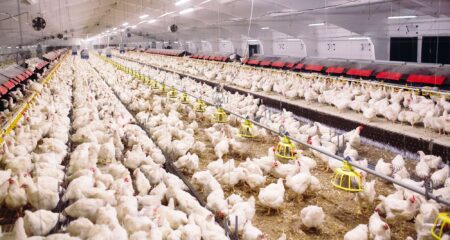As another week passed, the U.S. Drought Monitor (USDM) reported further changes in drought status, as dry weather persisted across parts of the U.S. The map shows worsening drought in the Northeast and from Missouri northward to the Great Lakes states. Intense short-term drought continued to worsen in parts of Illinois, Indiana, Missouri, and Ohio.
Some improvements occurred in southeast Missouri and in the Ohio River Valley, along with parts of the Mississippi River Valley.
Midwest
In the Midwest, swaths of significant rain fell from southwest to central Iowa, across central Lower Michigan, and in the Ohio River Valley and Missouri Bootheel, according to the USDM.
Rainfall in the far southern parts of Ohio, Indiana, Illinois, western Kentucky, and the Missouri Bootheel improved conditions, as soil moisture and streamflow continued to recover and precipitation deficits lessened.
However, short-term drought, with localized longer-term impacts, continued to intensify this week from southwest Missouri northeast into central and northern Illinois, northern Indiana, and northwest Ohio after another mainly dry week. In those areas, soil moisture and streamflow remained very low. In parts of central Illinois, blowing dust was reported, causing dangerous driving conditions.
Illinois Wyffels agronomy manager Ryan Gentle shared that it has been hot and dry.
“Some areas are going on 45 days with no rain,” Gentle said.
Phil Krieg, an agronomy service representative for Syngenta Crop Protection in southern Illinois and southwest Indiana, said he is also feeling the effects of the drought.
“Above-average temperatures with the daytime highs 85–90°F and no rainfall,” Krieg said. “Field fires are a great risk right now, and I have seen reports of more field fires than ever before.”
Short-term moderate drought expanded in coverage from northern Minnesota into northwest Wisconsin.
Last week in Wisconsin, Syngenta agronomic service representative Nick Groth said he experienced warm, dry weather.
“It was a great week to get soybean harvest rolling, and many fields were harvested across the state,” Groth said. “Humidity and heavy dews have been valuable for maintaining soybean moisture. Some cornfields in the southern part of Wisconsin may already be drier than ideal due to the warm, dry weather and the heavy disease pressure.”
High Plains
Temperatures this week across the High Plains region were mostly 5–15°F above normal.
Moderate to locally heavy precipitation fell in parts of the San Juan Mountains in southwest Colorado, the Rocky Mountains of northern Colorado, and across much of Wyoming, northwest South Dakota, and central to north-central North Dakota, according to the USDM.
In north-central Kansas, moderate drought improved in some areas, where locally over 2 inches of rain fell. In eastern Kansas, short-term abnormal dryness and moderate drought worsened in spots, where streamflow and soil moisture levels dropped, along with growing precipitation shortages.
There was a large expansion in abnormal dryness in northeast Nebraska and southeast South Dakota.
“Nebraska has seen good drydown weather,” Syngenta agronomic service representative Travis Gustafson said. “Soybeans are almost too dry, with harvest moistures around 10%. Overall, the first week of October has been just about ideal for good harvest conditions.”


:max_bytes(150000):strip_icc()/Markets-10-Corn-up-wheat-up-5-a41d988ceef74aedbcbc093b791d7bdc.jpeg)
:max_bytes(150000):strip_icc()/IMG_1591-2048x1365-362687ca596f4814967abffff2b4be2c.jpg)
:max_bytes(150000):strip_icc()/SuccessfulFarmingShareImage-8fed6410b43147a19ed5ea1e3243227f.png)


:max_bytes(150000):strip_icc()/Lee20Combine-2000-74f4b0472e2f4244a50679f9d4febb2f.jpeg)

:max_bytes(150000):strip_icc()/IMG_7575-ac6db3006a2145109bcc2df421c7a962.jpeg)
